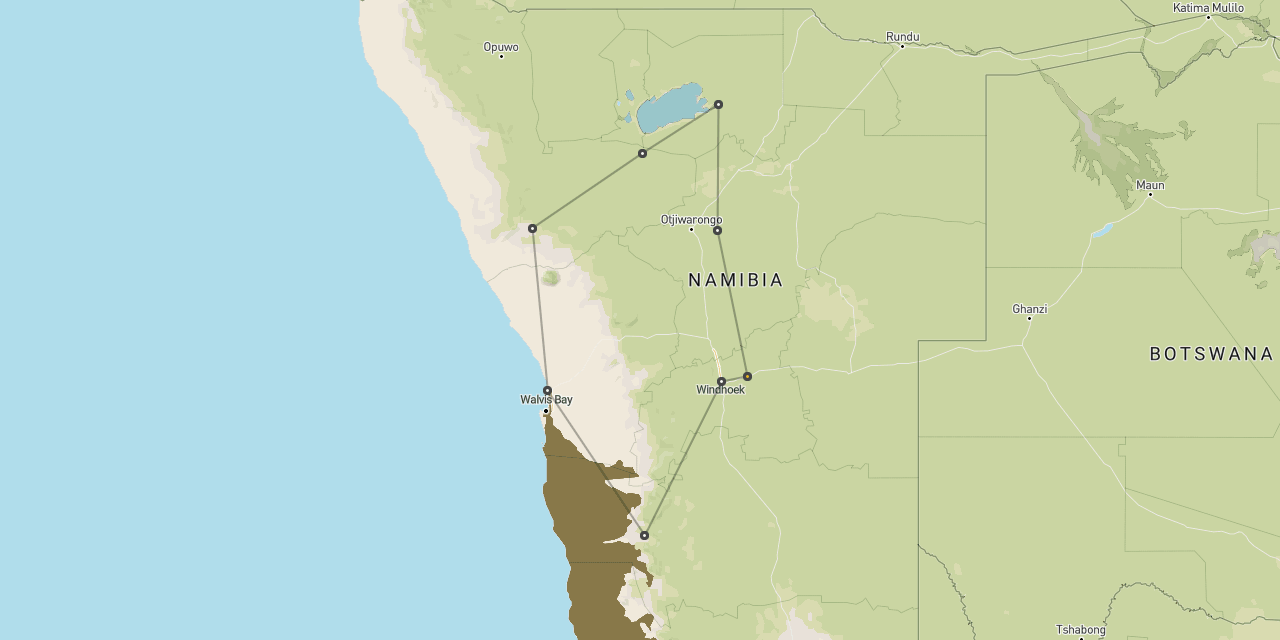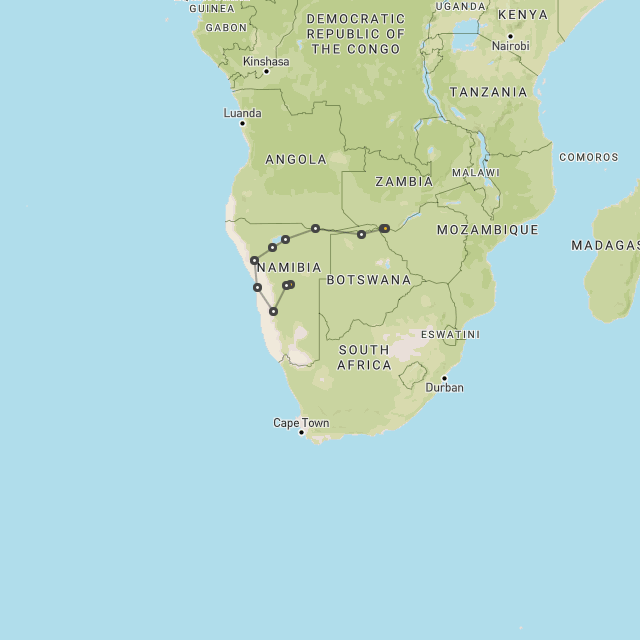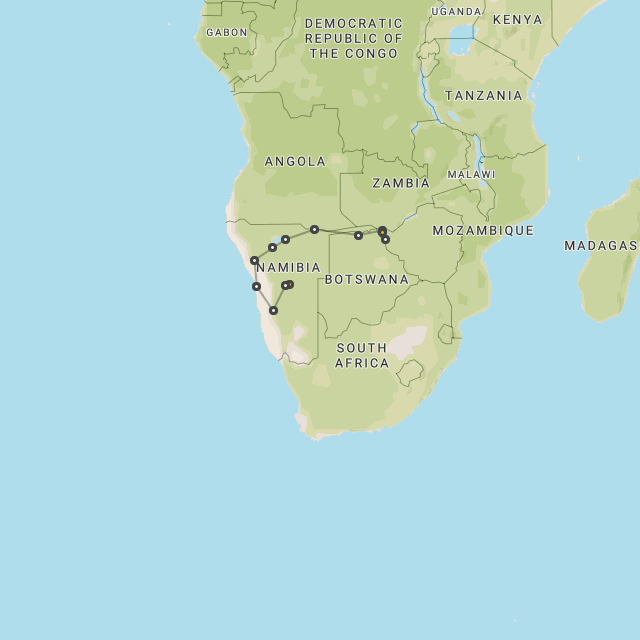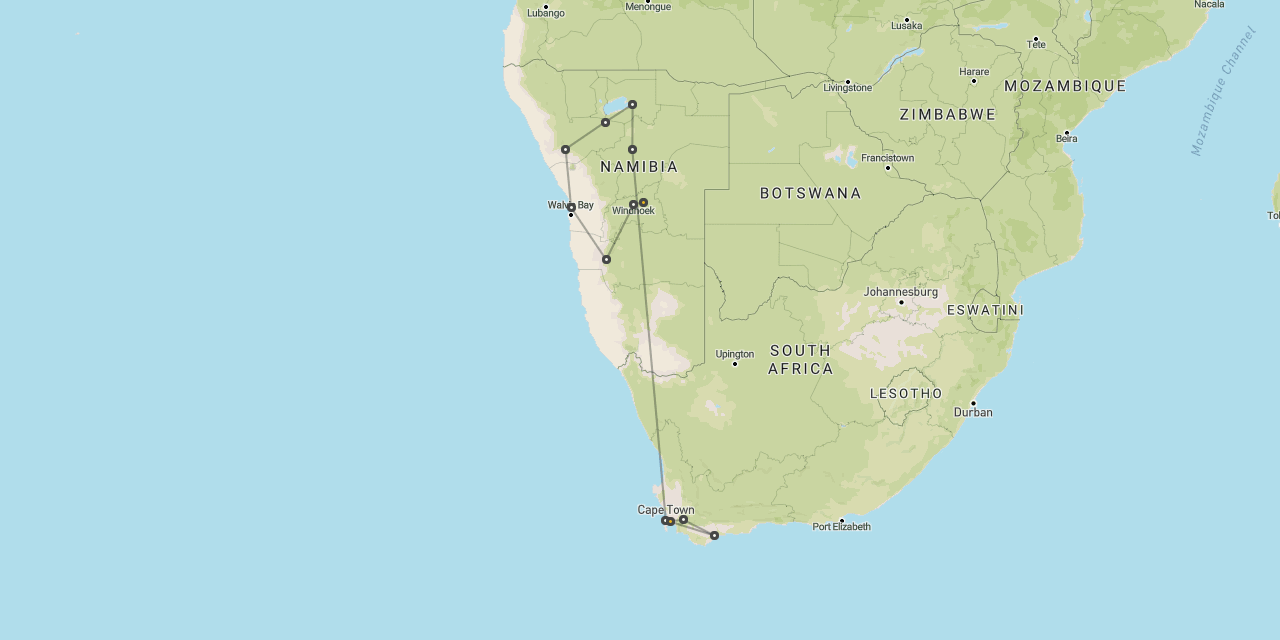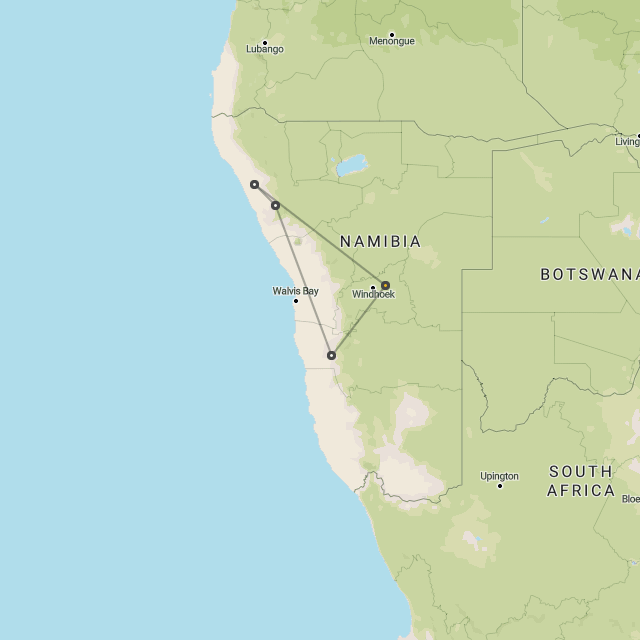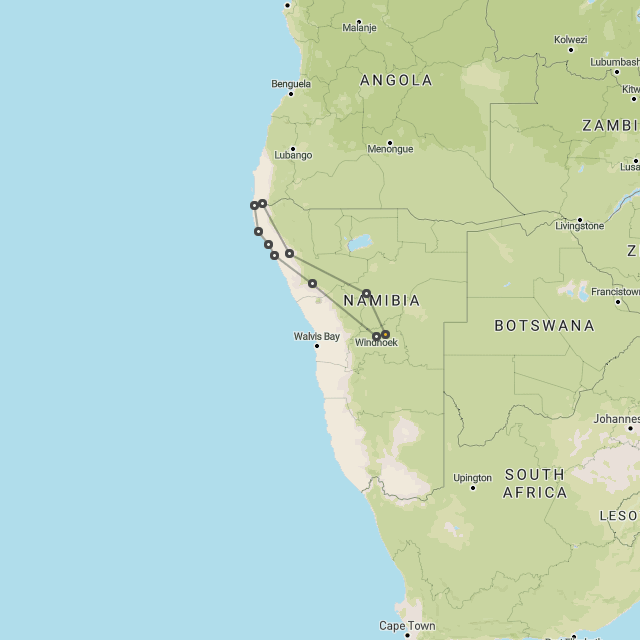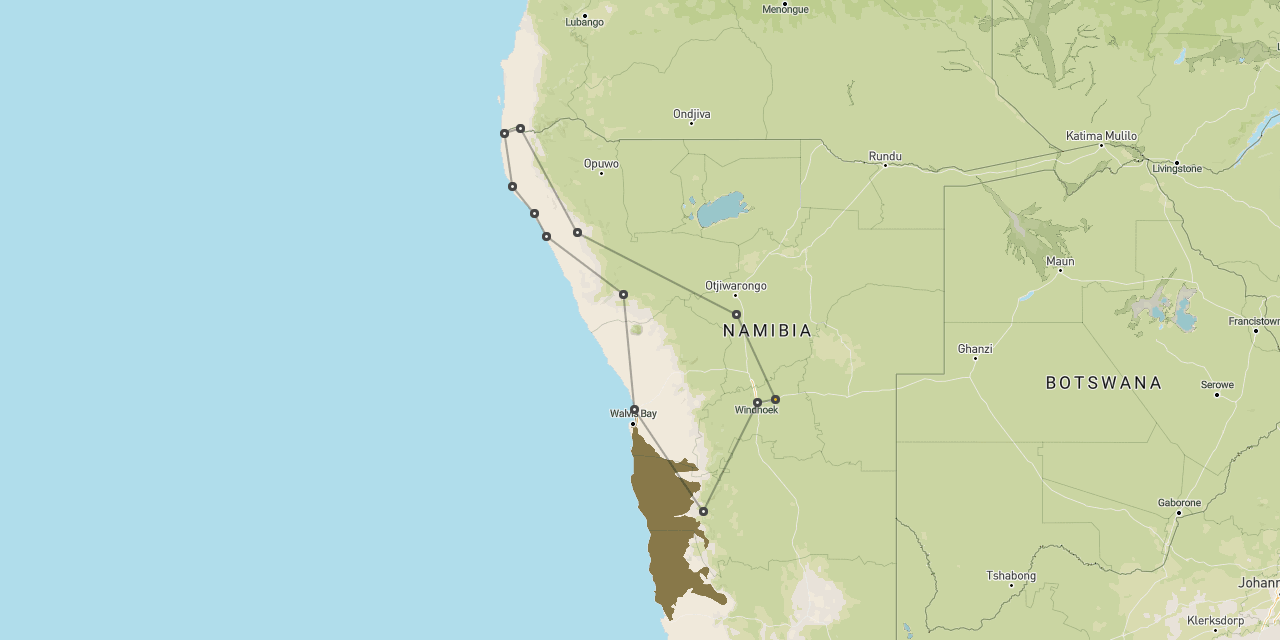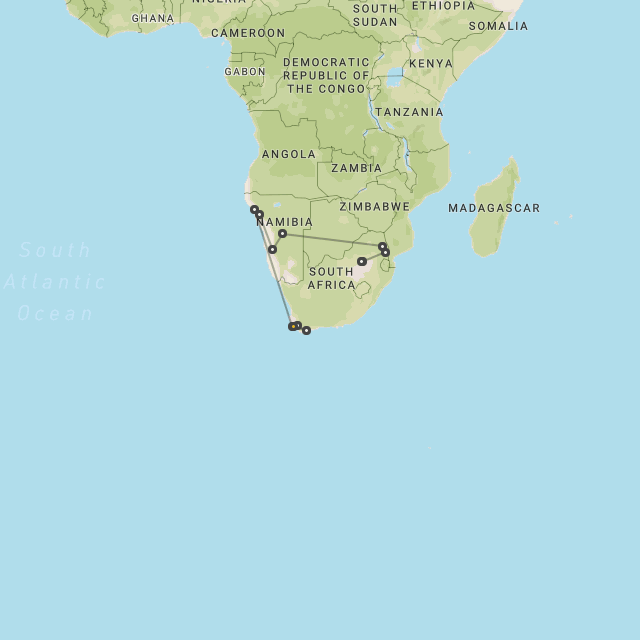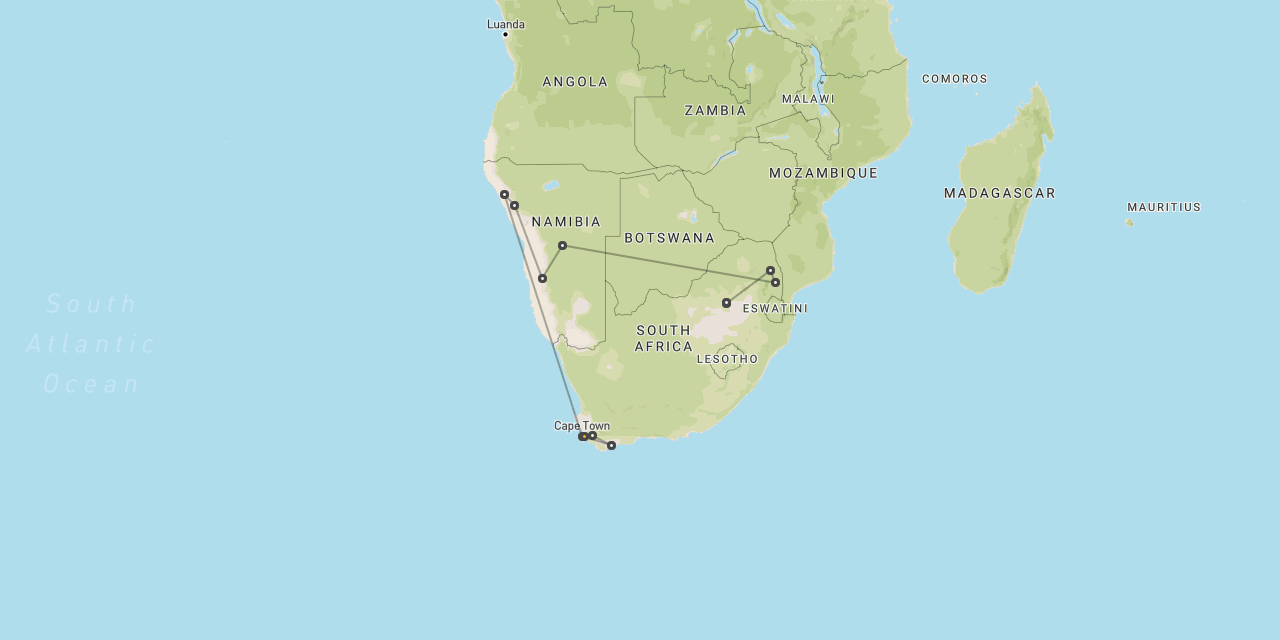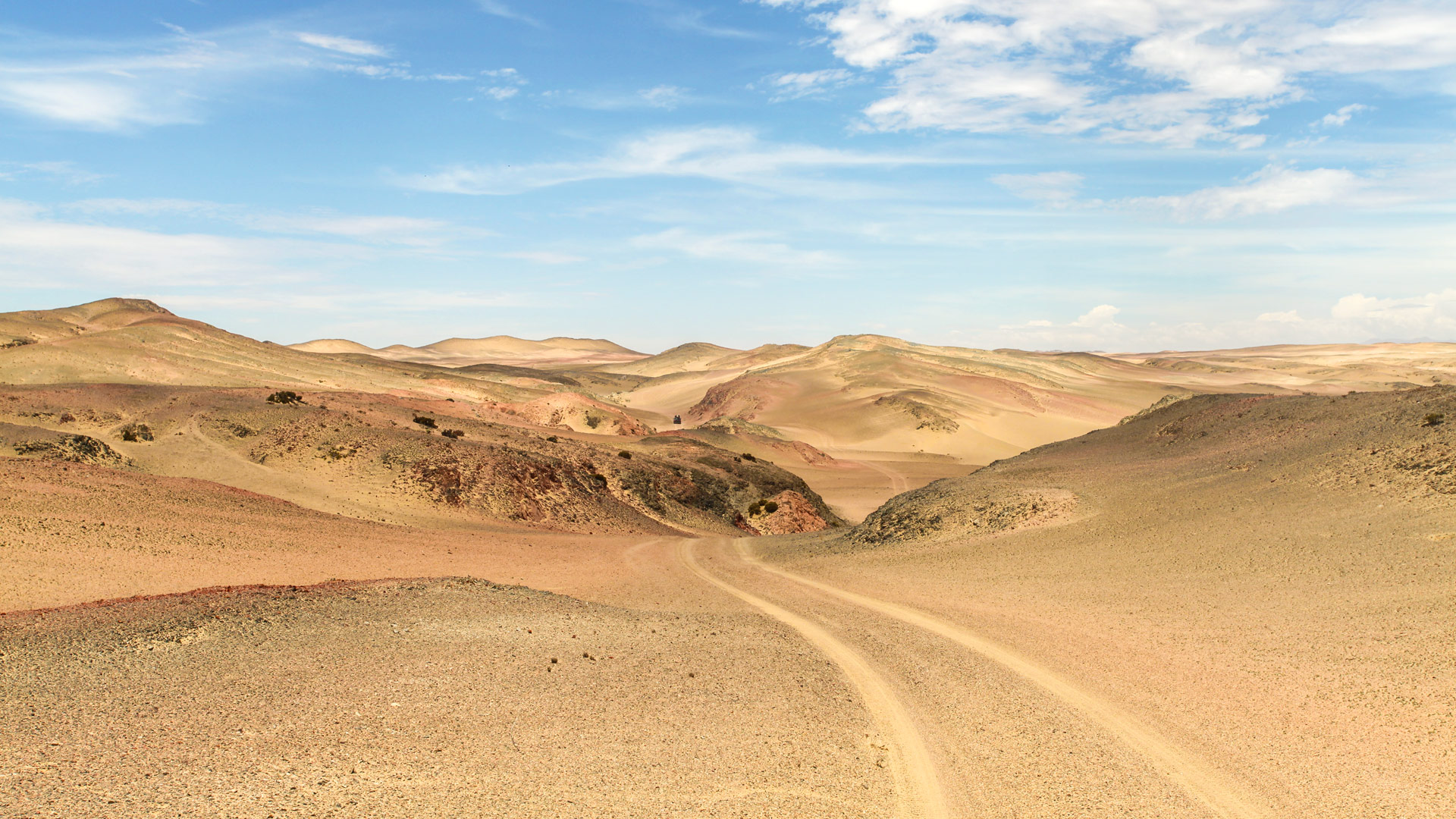
Safari to the Skeleton Coast
Skeleton Coast
is the greatest wilderness area
in the whole of Southern Africa
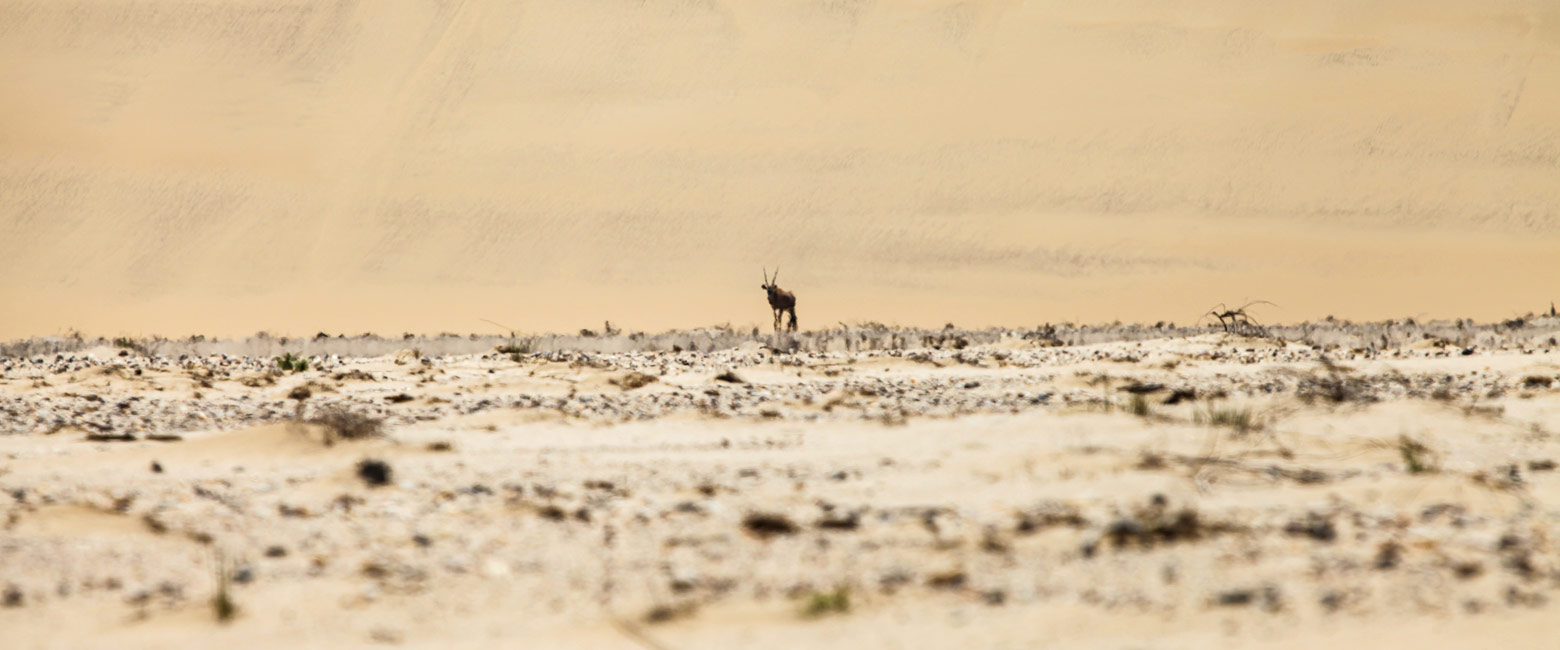
a savage and intoxicating region
Set in the extreme northwest of Namibia, Skeleton Coast North is one of the most incredible and remote wilderness areas in Africa.
This utterly wild and savage region encompasses the most northerly 400km of the Namibian coastline up to Angola and only those with rare and precious government permits can enter this forbidden area.
Highlights include vast seal colonies, desert lions, elephants and giraffes, abandoned diamond mines, remote desert oases and treacherous quicksand.
The hinterland is largely comprised of vast rocky plains and distant granite mountains.
These deserts are bisected by ephemeral rivers, whose sub-surface waters bring life to the arid landscapes. These remote valleys serve as hidden retreats for rare desert elephants, giraffes, zebras and lions.
Towards the coast these subterranean rivers spring to the surface, creating remarkable desert oases.
By contrast, the cold Antarctic waters are packed full of life, with vast shoals of fish immediately offshore. These fish are the reason for the enormous seal colonies that lie at intervals along the coast, the seals in turn being predated upon by jackals, brown hyenas and desert lions.
On a coastline with virtually zero rainfall, the daily coastal fogs are the only source of water. Many species of plants and animals have uniquely adapted to survive from the condensation provided by these fogs.
Virtually every trace of historic human presence on the Skeleton Coast is preserved. Tales of mysterious prehistoric villages, legendary shipwrecks and failed diamond prospecting are written in the sand.
In the extreme north vast fields of dunes create a barrier that only the most extreme guided safaris are able to cross. These dunes cascade down to the miraculous Kunene River, which flows year round through otherwise desolate landscapes and marks the border with Angola.
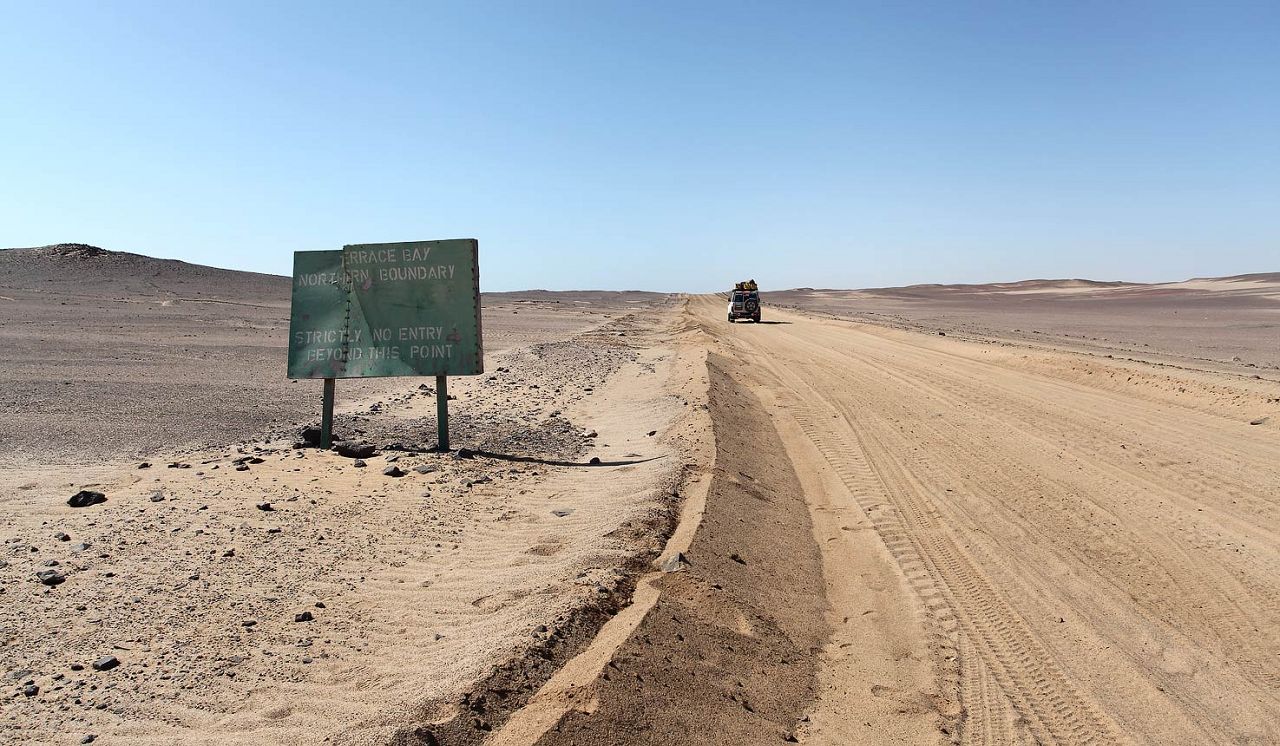
Gallery
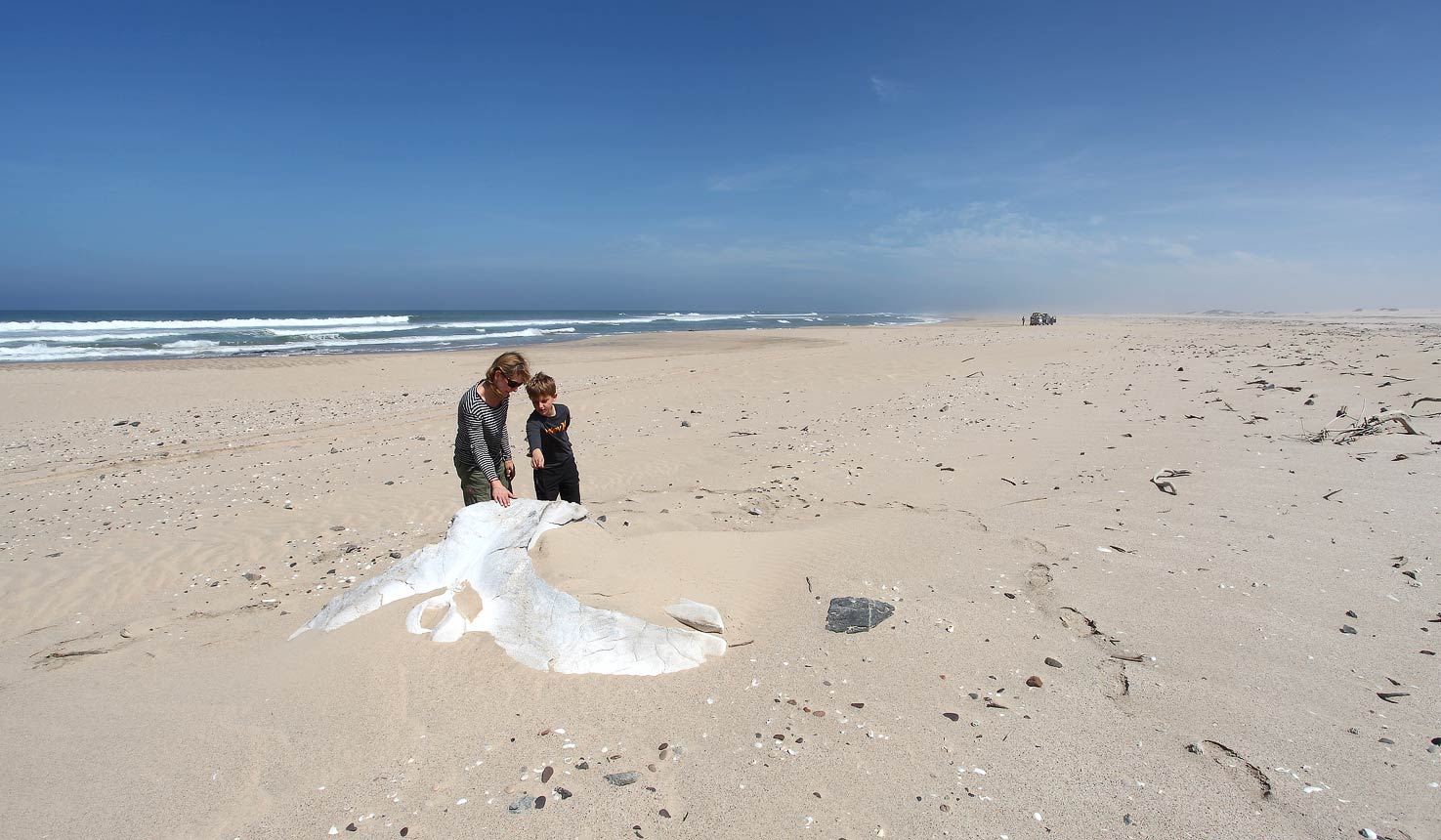
Video
Map
Skeleton Coast North inherently features in a relatively low proportion of trips. This place is too harsh and obscure for most people. It also demands a high commitment of time and money.
The usual stay duration is 3 nights in a single lodge or 4-8 nights on an overland expedition.
Seasonality
The climate on the Skeleton Coast is really quite remarkable and unlike any other on the continent, in that there is virtually no change in conditions year round.
Temperatures during the day average around 21C/70F in most months, possibly dropping by a couple of degrees during Aug-Nov. At night the low temperatures are around 13C/55F, possibly also dropping by a corresponding amount Jun-Sep.
There is virtually no rainfall in any month of the year, although we have seen some charts recording highs of around 5mm or 1/4″ in March. Most months are well under 1mm.
Dec-Apr : Windy season
The most significant seasonal variation are the Dec-Apr onshore winds, which can be relentless during what is the green season further inland. In reality, this tends to have little adverse effect on a trip, since it adds to the atmosphere, with bracing visits to the coast and cosy sheltered campsites tucked further inland.
The other seasonal factor is that the ephemeral rivers that feed down into this area are more likely to flood due to rainfall inland during the Jan-Mar season. Such floods can block the tracks that lead along the coast, but these events tend to be over almost as quickly as they start, at worst causing a delay of a couple of hours. The effects on wildlife movements are reasonably slight in this area.
May-Nov : Fog season
At this time of year, the onshore winds tend to be less strong, which can lead to heavy blankets of fog along the coastal strip, which almost always burn off through the morning to restore the usual searing sunshine. It is the moisture from these fogs that sustains so much of the specialist wildlife in the area.
There is also no great seasonal variation in visitor traffic into this area, which is consistently very low, close to zero in most parts. The only thing to watch out for is that you may need to book well ahead to secure rooms at Shipwreck Lodge during the main holiday season Jul-Sep. For overland expeditions it is always necessary to book well in advance as permits are so very limited.
Getting around
There are three main ways to get around Namibia and visit Skeleton Coast North …
Self-drive
The first option is to self-drive, which is reasonably safe and easy to do. The upside is that it is by far the lowest cost way to get around. The downside is that, for safety reasons, you are obliged to stick to a relatively limited network of main roads locations.
Whilst it is definitely not possible to self-drive inside the Skeleton Coast North area, there are ways to include it in a self-drive trip, by leaving your vehicle at a remote location and travelling on with a guide.
Flying safari
The second option is to travel around by light aircraft. This is both a great deal easier and enables you to access some wonderfully remote locations. The downside is that it’s much more expensive, as much as three times the price of self-drive.
It is possible to fly into the Skeleton Coast North area, landing at the airstrip at Mowe Bay and staying at the only permanent accommodation, Shipwreck Lodge.
Guided overland expedition
The third option is guided overland expedition, which enables you to really explore the truly wild and wonderful parts of the country. The downsides are that this can be quite an arduous way to travel and can become quite costly.
In this Skeleton Coast North area, these private guided overland expeditions are by far the best way to travel and the only way to truly explore the whole area.
Government permits for these expeditions are extremely limited and we usually sell them out at least a year in advance. No surprise really, as this is probably the most outrageously cool safari that we know.
Combinations
Many of the very best trips to Namibia combine two or three of these ways of travelling around.
Where to stay
The only permanent accommodation option in the Skeleton Coast North area is Shipwreck Lodge. This is located at the mouth of the Hoarusib River in the southern part of the area and provides access to places of interest between the Hoarusib and Hoanib rivers, which represents roughly the southern third of the area.
Whilst Shipwreck Lodge is relatively comfortable and well serviced, if you want a genuinely high end base then the best thing to do is stay in the Hoanib Skeleton Coast Camp in the adjacent Damaraland North area and visit the Skeleton Coast area on a day trip. It doesn’t exactly deliver the full coastal experience, but it’s certainly a fine way to get around.
If you are planning an overland guide expedition then you will most likely undertake some kind of clockwise circuit around the northwest region, which would see you entering the Skeleton Coast North area through Mowe Bay in the south and exiting.
best explored by serious overland expeditions
let us know your thoughts about Namibia
and we will help you build the perfect safari
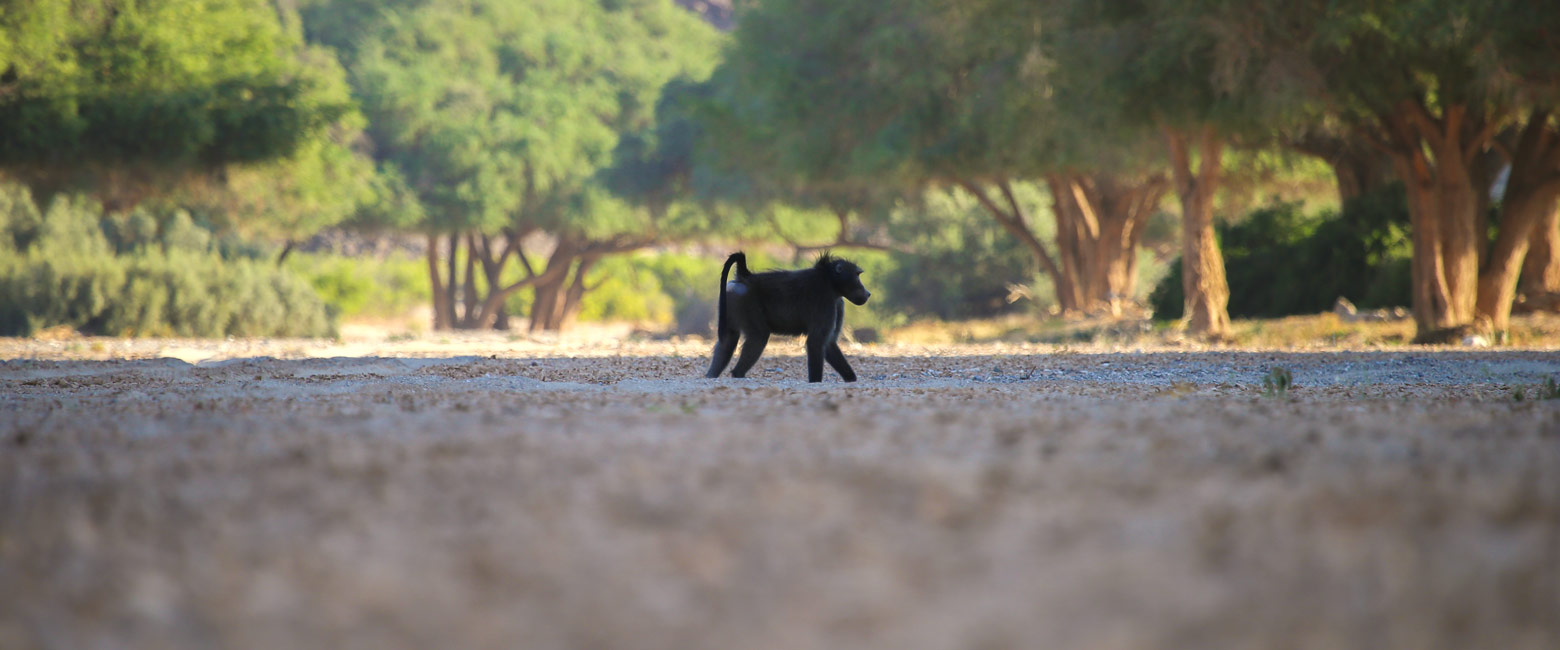
Extraordinary tailor-made adventures,
from earthy and edgy to easy and extravagant
From around USD 2500 per person, you set the ceiling
Sample Trips
Here are some of our popular trip shapes

Get started on your trip
It’s never too soon to get in touch, we are here to help with every stage of your planning.
Best Lodges
We regularly inspect and photograph all of the the best lodges, to ensure that we always recommend the most suitable options
Key Locations
Take a look around related locations. Click ‘View more’ to explore locations further afield.





















